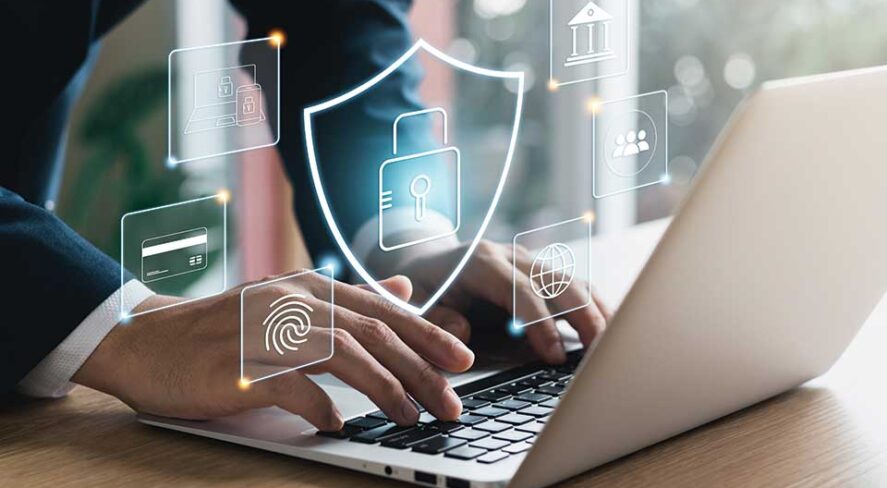Physical Access Control Joins the IoT Ecosystem

ACRE Security’s Jeff Ross Discusses How a Security Solution Leads the Way to Digital Transformation

Businesses worldwide are undergoing a profound change. Embracing process automation and artificial intelligence (AI)-driven data capture, they are embarking on the journey of digital transformation.
Amidst this technological revolution, the Internet of Things (IoT) has emerged as a critical enabler, linking devices and creating a connected world. However, one aspect often overlooked as a driver of this transformation is physical access control – a fundamental element of an organization’s security infrastructure that not only ensures safety but also plays a pivotal role in shaping and enhancing IoT strategies and overall digital transformation.
In the past, physical access control systems were perceived as antiquated compared to their network access counterparts because of a reliance on simple methods like mechanical locks, keys or basic badge systems. These traditional methods lacked sophistication and presented challenges when updating the system, making them vulnerable to security breaches. Lost, duplicated or stolen keys posed serious security risks, and the lack of data insight limited their effectiveness.
The landscape of physical access control has undergone significant advances in recent years, however. Modern access control systems have embraced cutting-edge technologies like biometrics, facial recognition, mobile credentials and IoT integration. This has elevated physical access control from a mere security-focused function to a powerful tool for data-driven decision-making, streamlined operations, and overall business intelligence. Today, it is recognized as an essential component of modern, digitally transformed, and highly secure businesses.
But how does physical access control contribute to driving IoT strategies and digital transformation?
These systems are inherently IoT devices themselves, consisting of interconnected solutions that collect and exchange data over networks. As a result, they contribute to the establishment of a broader IoT network within organizations, becoming a cornerstone of digital transformation efforts.
The integration of physical access control with other IoT devices enables seamless interoperability across multiple platforms, facilitating real-time data exchange. This data-driven approach empowers businesses to identify operational inefficiencies, make informed decisions and formulate effective strategies. Consequently, companies can streamline operations, optimize resource allocation and enhance overall productivity, accelerating their digital transformation journey.
The convergence of physical access control with IoT devices opens new horizons for innovation. By combining access control systems with sensors or automation systems, businesses can create intelligent operations in which tasks like lighting, heating and air conditioning are automated based on occupancy. This not only improves user experience but also promotes sustainability by reducing energy consumption.
The data generated by these converged systems also aids in understanding space utilization, leading to more efficient workplace design and can be crucial for contact tracing during health emergencies. Cloud-based systems offer scalability, allowing businesses to add or remove access points and requiring no significant hardware modifications or software installations for users – a vital feature for organizations anticipating growth or operational changes.
Undoubtedly, physical access control remains a linchpin in maintaining the security of businesses, protecting tangible assets, confidential data and, most importantly, personnel. Beyond establishing secure perimeters, access control systems mitigate security risks associated with the expansive IoT ecosystem. As the number of connected devices increases, the risk of data breaches and cyberattacks grows. Access control devices ensure that only authorized individuals have physical and digital access to the system, its data and its network path.
Looking ahead, the future of physical access control will probably be driven by innovations like AI, which will enhance security measures by identifying abnormal behavior, such as tailgating, leading to proactive threat detection and more robust security protocols.
The fusion of physical access control with IoT strategies can be a vital contributor to the digital evolutions experienced by organizations, including those in the healthcare, pharmaceutical and critical infrastructure sectors. These strategies extend beyond enhancing security; they boost operational efficiency, drive innovation and support sustainability.
As businesses continue their journey through the technology landscape, physical access control systems will remain pivotal tools that steer the future trajectory of IoT and digital transformation. With their ability to seamlessly integrate with IoT devices, collect valuable data, and enhance overall security, they become indispensable assets for modern businesses aiming to thrive in the digital age. By embracing these transformative technologies, companies can pave the way to a more connected, secure, data-driven future.
